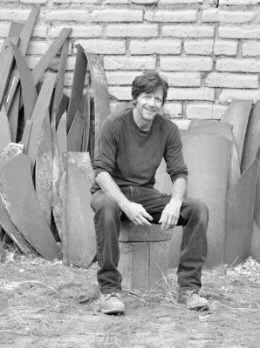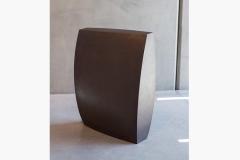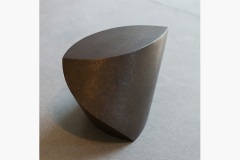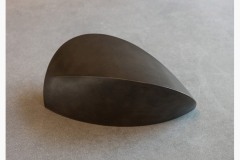Project Description

Excerpts from William Peterson, Tom Waldron, 1985
They cut through space like beautiful and efficient tools. No bases or pedestals are required. They sit calm and contained on the floor or ground, lending their composure to the whole of their surroundings.
Still, they are not inert. Each of Tom Waldron’s sculpture’s is a contained mass, yet it is not actually solid. Each encloses or defines a volume and seems to swell with its internal presence. Because of this quality of quiet respiration the sculptures have the effect of
being more organic than geometry.
Unitary, but faceted like gemstones, they appear to have been carved or cast in a mold rather than fabricated of steel plates. Perhaps it is because they borrow from industrial processes and yet remain intimate and familiar that they are reminiscent of common tools and implements. Their forms vaguely recall axes, blades and adzes, wedges and sledges, chisels and plowshares—that smoothly divide matter or glide over a surface. But they are refined away from function and have grown away from tools in size. They are not small enough to be handled and manipulated like tools—that would compromise their self-contained quality of independence and autonomy. Nor do they loom threateningly large—that would upset the equipoise of their calm containment and displace the fullness and presentness of the moment with a distractive sense of immanent of potential action…
The singleness, self-sufficiency and containment of Waldron’s metal form make them reminiscent of the “primary structures” proposed by the Minimalists. But Waldron modifies the dispassionate and angular geometry of Minimalism with gentle curves and an intricate interplay of corners and planes. The objective distance and stumbling block bluntness of Minimalism is denied in the warmth and attractive intimacy of Waldron’s forms. A subtle curve will draw you in, leading you around to the revelation of the form’s other facets and to the interaction of planar forces that meet and pull away from one another at the sculpture’s various junctures.



